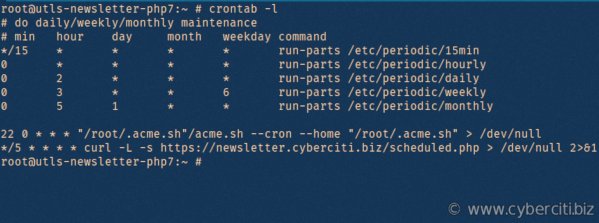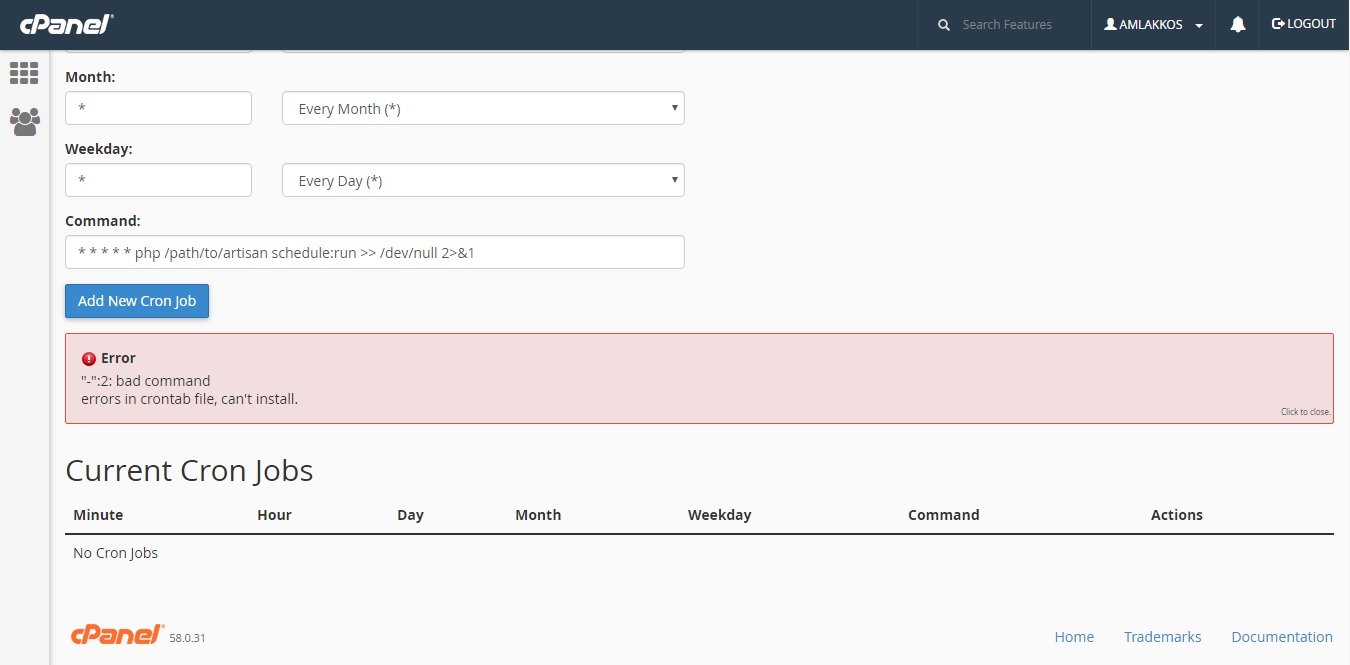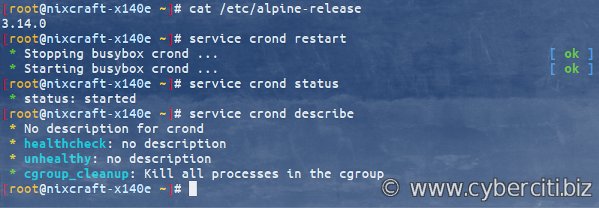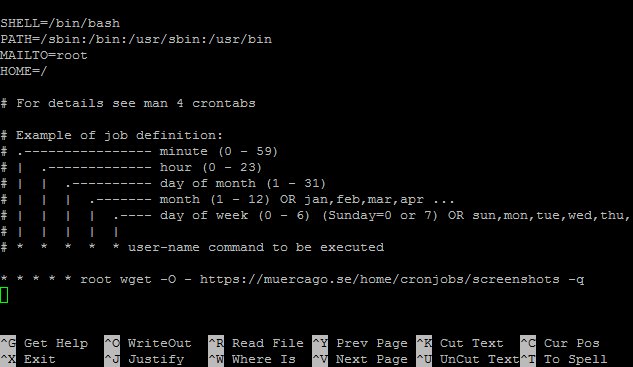Looking for a way to automate your tasks on Linux? Enter cronjob Linux. In simple terms, cronjob Linux is a time-based job scheduler that allows you to run scheduled commands or scripts automatically. Whether you’re a developer, system administrator, or just someone looking to streamline their daily operations, cronjob Linux is a powerful tool in your arsenal. In this article, we’ll delve into the ins and outs of cronjob Linux, exploring its functionalities, benefits, and practical applications. So, let’s jump right in and discover how this handy utility can simplify your life, boost your productivity, and save you time and effort.
Cronjob Linux: Automate Your Tasks with Ease
In the world of Linux, efficiency is key. As a Linux user, you’re probably familiar with the power and flexibility of the command line. But did you know that you can automate repetitive tasks and save valuable time using Cronjobs? In this article, we will explore the ins and outs of Cronjob Linux, providing you with a comprehensive guide on how to harness its capabilities to streamline your workflow.
What is Cron?
Before delving into the specifics of Cronjob Linux, let’s first understand what Cron is. Cron is a time-based job scheduler in Unix-like operating systems (such as Linux) that allows you to automate the execution of commands or scripts at specified intervals. With Cron, you can schedule tasks to run at fixed times, dates, or intervals, without the need for manual intervention.
Cron operates using a simple text file called the “crontab” (short for Cron table). This file contains a list of commands or scripts to be executed, along with the schedule for each task. Each user on a Linux system can have their own crontab file, enabling them to schedule specific tasks according to their needs.
The Anatomy of a Cron Expression
To set up a Cronjob, you need to define a schedule using a Cron expression. A Cron expression consists of five fields, each representing a specific time unit.
- Minute: The minute of the hour when the task should run (0-59)
- Hour: The hour of the day when the task should run (0-23)
- Day of the month: The day of the month when the task should run (1-31)
- Month: The month of the year when the task should run (1-12)
- Day of the week: The day of the week when the task should run (0-7, where both 0 and 7 represent Sunday)
Using these fields, you can create complex schedules to execute commands or scripts at specific times. For example, a Cron expression of “0 0 * * 1” would execute a task at midnight (0 minutes past 0 hours) every Monday (the first day of the week).
Creating and Managing Cronjobs
Now that we understand the basics of Cron, let’s dive into creating and managing Cronjobs in Linux. Follow these steps to get started:
- Open the terminal on your Linux system. This is where you will be entering all the commands.
- To create or edit your crontab file, enter the command
crontab -e. This will open the crontab file in the default text editor. - Within the crontab file, each line represents a separate Cronjob. To schedule a task, add a new line and specify the Cron expression followed by the command or script you want to execute. For example, to print “Hello, World!” every day at 9:00 AM, you would add the line
0 9 * * * echo "Hello, World!". - Save and exit the crontab file. The changes will take effect immediately.
That’s it! You have successfully created a Cronjob. The specified command or script will now run according to the schedule you defined.
Managing Cronjobs with crontab
Aside from creating Cronjobs, you may also need to manage them. The crontab command provides several options to help you manage your Cronjobs effectively:
crontab -e: Opens the crontab file for editing.crontab -l: Lists the contents of the crontab file.crontab -r: Removes your crontab file, effectively deleting all scheduled Cronjobs.
By utilizing these commands, you can easily modify and maintain your Cronjobs as your needs evolve.
Common Use Cases for Cronjobs
Now that you know how to create and manage Cronjobs, let’s explore some common use cases where Cron can be a powerful tool:
Automated Backups
Regularly backing up your important files is crucial for data protection. With Cronjobs, you can automate the backup process, ensuring your files are backed up at regular intervals without any manual intervention.
Here’s an example Cronjob that backs up a directory every day at midnight:
0 0 * * * cp -R /path/to/source /path/to/backup
This Cronjob uses the cp command to make a recursive copy of the source directory and stores it in the backup directory. By specifying the appropriate paths, you can customize the backup process to fit your needs.
System Updates
Keeping your system up to date with the latest security patches and software updates is essential for maintaining a secure and optimized environment. Cronjobs can automate the process of updating your system.
For example, you can schedule a Cronjob to run the package update command every Sunday at 2:00 AM:
0 2 * * 7 apt-get update && apt-get upgrade -y
This Cronjob uses the apt-get command to update the package lists and upgrade all installed packages. By running this task on a regular basis, you can ensure your system remains up to date.
Data Synchronization
If you work with distributed systems or multiple servers, Cronjobs can help automate data synchronization tasks. Whether you need to replicate databases, synchronize files across servers, or fetch data from external sources, Cronjobs can handle it.
Here’s an example Cronjob that synchronizes two directories every hour:
0 * * * * rsync -avz /path/to/source/ /path/to/destination
This Cronjob uses the rsync command to synchronize the contents of the source directory with the destination directory. By specifying the appropriate paths, you can automate the process of keeping your directories in sync.
Best Practices for Cronjobs
To ensure the smooth execution and reliability of your Cronjobs, consider the following best practices:
Use Absolute Paths
When specifying commands or scripts in your Cronjobs, always use absolute paths. Cronjobs do not have the same environment variables as your interactive shell, so using relative paths may lead to errors or unexpected behavior.
Redirect Output
By default, the output of a Cronjob is sent to the owner of the Cronjob via email. To avoid flooding your inbox, it’s best to redirect the output to a log file.
0 9 * * * /path/to/script >> /path/to/logfile.log 2>&1
In this example, the output of the script is appended to a log file, both stdout and stderr. This allows you to review the output at any time and ensures that your inbox remains clutter-free.
Test and Validate
Before deploying a Cronjob in a production environment, it’s crucial to test and validate it in a controlled environment. Running test Cronjobs helps identify any errors or issues before they impact critical tasks.
Additionally, always double-check your Cron expressions to ensure they are correctly defined. A small mistake can cause tasks to run at unexpected times.
Cronjob Linux is a powerful tool for automating tasks in the Linux environment. By leveraging Cron and its scheduling capabilities, you can free up your time and streamline your workflow. Whether it’s automating backups, system updates, or data synchronization, Cronjobs can handle it all. With the knowledge gained from this guide, you are well on your way to becoming a Cronjob master!
Linux Crash Course – Scheduling Tasks with Cron
Frequently Asked Questions
What is a cronjob in Linux?
A cronjob in Linux refers to a time-based task scheduler that allows users to automate the execution of commands or scripts at specific intervals. It is widely used to schedule repetitive tasks, such as system maintenance, backups, or data synchronization.
How do I create a cronjob in Linux?
To create a cronjob in Linux, you can use the crontab command. By running “crontab -e” in the terminal, you can edit the cron table file, where you can define the timing and the command to be executed for each job. After saving the changes, the cron daemon will automatically pick them up, and the tasks will be executed accordingly.
Can I see a list of my existing cronjobs?
Yes, you can view a list of your existing cronjobs by executing the “crontab -l” command. This command will display the current user’s cron table, showing the scheduled tasks and their respective timing.
How can I edit or remove a cronjob?
To edit or remove a cronjob, you need to use the “crontab -e” command to open the cron table file for editing. Once you make the necessary changes, save the file. To remove a cronjob, simply delete the corresponding line from the file before saving it.
What are some common syntax errors I should avoid when using cronjobs?
When defining cronjobs, it is important to avoid common syntax errors such as missing the required spaces or using incorrect wildcard characters. It’s recommended to always test the command outside of the cron environment before scheduling it. Additionally, make sure to specify the full path for commands and files to avoid any potential issues.
Can I redirect the output of a cronjob to a file?
Yes, you can redirect the output of a cronjob to a file by modifying the cron command. For example, to redirect both the standard output and error output to a file, you can use the following syntax:
“`
* * * * * /path/to/command >> /path/to/file.log 2>&1
“`
This will append the output to the specified file, allowing you to review any messages or errors produced by the cronjob.
Final Thoughts
In conclusion, cronjob linux is a powerful tool for automating repetitive tasks on a Linux system. With its flexible scheduling options and easy-to-use syntax, it allows users to schedule scripts and commands to run at specified intervals, ensuring that important operations are executed promptly and efficiently. By incorporating cronjob linux into their workflow, users can save time and effort, improving productivity and freeing up resources for other important tasks. Whether it’s performing regular system maintenance, backing up files, or running periodic scripts, cronjob linux is a reliable and essential tool for any Linux user.




